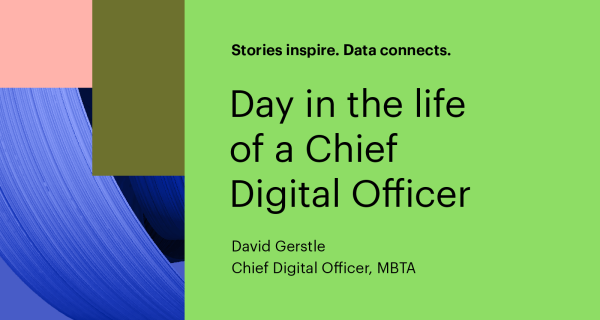Digital transformation is an overused term, but there’s little doubt that most organizations are transforming at least some part of their business with digital technologies. In the 2023 edition of Foundry’s annual Digital Business study, 93% of respondents say they have adopted or plan to adopt a “digital first” approach to business processes, operation, and customer engagement.
The top two objectives of companies’ digital business strategy are 1) improving employee productivity/collaboration (cited by 51% of respondents, up from 44% in 2021) and 2) reducing costs/inefficiencies (50%, up from 38% two years ago). Seeing these two objectives at the top is no surprise given the socioeconomic shocks of the past three years and their subsequent impact on work models and business performance.
Despite these broadly shared objectives, all digital transformation journeys are not the same. For tech marketers, it’s important to understand where organizations are on their quest and how that impacts their information needs and their technology buying decisions. To that end, this year’s Digital Business Study includes a new Digital Maturity Index, which breaks down responding organizations into four levels of digital adoption:

Let’s look at some of the characteristics of each segment, along with some guidance for tech marketers on how to adjust their messaging to create deeper interest and engagement from each group.
Nascent
These early-stage digital businesses (go ahead, call them laggards) are more likely than other organizations to face a broad set of hurdles in executing transformation initiatives. Their top five challenges include:
- Lack of sufficient budget
- Gaps in staffing/skill sets
- Cultural issues
- Too many competing priorities
- Lack of corporate vision/buy-in
In addition, 67% of nascent digital adopters view cost savings as a top objective of digital business strategies, compared to 50% of all respondents. Just 16% say customer experience has become more of a priority over the past 12 months, compared with 95% of advanced companies.
This narrow focus likely limits the ability of IT leaders at these companies to get buy-in for new initiatives and, combined with their long list of challenges, indicates that the issues these companies face are more often rooted in culture and mindset than the technology itself.
For tech marketers, messaging that emphasizes the importance of change management, creating a business case, measuring return on investment, and addressing skills gaps can help turn skeptics into advocates for increased digital spending.
Emerging
As with nascent organizations, companies in this early maturity stage still tend to prioritize their digital investments more around cost-cutting and productivity rather than growth-oriented goals such as improving business agility and customer experience. In addition, these companies tend to lag well behind their more mature peers in investing in core digital technologies such as analytics, 5G, and mobile technologies. More than one-third (36%), however, are researching AI/ML with an eye toward deploying these technologies over the next 12 months.
For tech marketers, the opportunity with these digital emergents includes guidance that helps them prioritize digital initiatives based on business needs and how to find the right skill sets to help them accelerate their progress. Providing thought leadership on the value of emerging technologies such as cloud-native platforms and generative AI can also establish your position as a credible source of information with IT teams that are beginning to research these topics.
Established
These organizations have a more balanced set of objectives for digital investment than their less mature peers, focusing on both cost-management and growth initiatives. More than three-quarters cite customer experience as a priority (78%) and say they’re committed to investing in their digital strategy despite current economic headwinds (76%). Seven in 10 believe their organization is further along on its digital business journey than they would have expected two years ago.
Among the main challenges for this group, complexity of IT infrastructure stands out relative to the other segments. This presents an opportunity for marketers to engage IT decision makers at these companies with information about how their solutions or services can streamline operations and reduce complexity. Additional messaging that focuses on how organizations can accelerate and scale their transformation efforts will help this segment move to the advanced level of digital maturity.
Advanced
Organizations at the top of our maturity scale are well ahead of their peers in several areas of digital business transformation. For example, they are more likely to:
- Prioritize business agility/resiliency, customer experience, security improvements, and revenue-driving innovation as key digital business objectives.
- Continue investments in digital business strategy regardless of economic indicators.
- Adopt a “remote-first” mindset when making technology purchases.
- Invest in advanced/emerging technologies such as cloud-native platforms, AI engineering, generative AI, and security mesh.
Some of their challenges reflect how deep these organizations are into the details of optimizing digital investments: IT complexity (31%), data collection, management, and analysis (30%), and integrating new applications with legacy systems (25%). These are all indicative of next-level issues that arise for organizations that are aggressively modernizing their tech stacks to support digital business.
Engagement with this audience should focus on resources that help them measure the impact of technology deployments, deploy best practices for operationalizing analytics across the business, and demonstrate how AI, automation, and similar capabilities can help to reduce complexity, integrate disparate systems and data, and accelerate innovation.
Understanding the progress organizations are making with their digital transformations, and the pain points they’re experiencing along the way, is critical for attracting and engaging with IT and business decision makers. The Digital Maturity Index is another tool in the toolbox to inform a brand-to-demand strategy that drives real results.
Rob O’Regan is Foundry’s global director of content strategy, overseeing a global team of content strategists who work with Foundry’s technology clients to develop and deliver award-winning content marketing programs.






